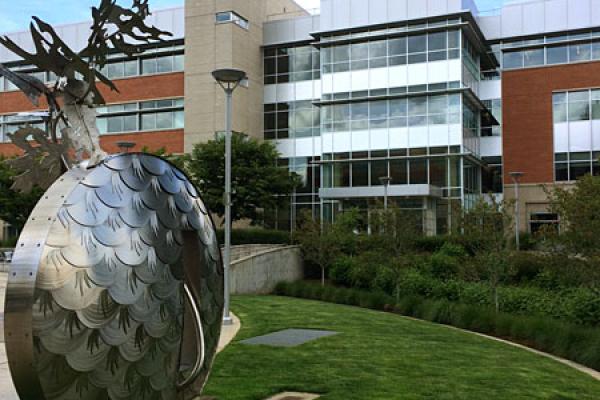FAQs
 Milk cartons are not easily recyclable in schools and, in some areas, they are not recyclable at all.
Milk cartons are not easily recyclable in schools and, in some areas, they are not recyclable at all.- In schools where dispensers are in use, students can choose how much milk to take and usually drink more of the milk they take, which reduces milk waste by over half. Canby schools increased their milk sales to students while still decreasing overall volume of milk purchased.
- Cartons are often thrown away half-full, adding to the weight of the garbage and contributing to injuries and messes when waste is carried out.
- Milk cartons make up at least 50% of a school's lunch trash volume. When those cartons are not there, trash cans do not fill as quickly and custodians will not have to empty the trash nearly as often, which saves time and trash bags.
- Without cartons in the garbage, a school may be able to save more money by reducing garbage service.
- Students report that the milk tastes better.
Canby School District
- Carus Elementary
- Cecile Trost Elementary
- Howard Eccles Elementary
- Ninety-One Elementary
- Philander Lee Elementary
- William Knight Elementary
North Clackamas School District
- Ardenwald Elementary
- Cascade Heights Public Charter
- Oak Grove Elementary
- Scouters Mountain
- Spring Mountain Elementary
- Sunnyside Elementary
- Verne Duncan Elementary
- View Acres Elementary
Oregon City School District
- Beavercreek Elementary
- Candy Lane Elementary
- Gaffney Lane Elementary
- Holcomb Elementary
- Jennings Lodge Elementary
- John McLoughlin Elementary
- Redland Elementary
Silver Falls School District
- Butte Creek School
Estimate for an elementary school with ~ 400 students
| 3-spigot stainless steel milk dispenser | $2,517 |
| Industrial cart for dispenser | $560 |
| 400 Washable cups ~$30 for case of 36 | $325 |
| Dishwashing trays 17 trays holding 25 cups | $400 |
| 2 carts to move trays to and from kitchen | $268 |
| 3 additional milk crates To simplify changing milk bags during lunch | $171 |
| Total: | $4241 |
The Canby and Olympia School Districts both report no additional spills after beginning to use the milk dispensers. In fact, some school personnel in Olympia have reported fewer spills with the milk dispensers.
53231In the Canby School District, the kitchen staff has found that the additional time required to wash the cups is negligible. Kitchen staff washes the dishes in between other tasks and no additional time has been required to wash cups.
53231Work with your dairy to get milk in bags. The dairy supplying Canby schools offered milk in 3-gallon bags. In Olympia, another community that has implemented milk dispensers, the dairy's 5 -gallon bags were too heavy. The dairy was able to fill them with just 4 gallons to make them easier to load.
53231Canby schools have not been audited yet, but they are following the same procedure as Olympia. The schools with dispensers in Olympia have passed their OSPI audits with flying colors. No issues were raised about the use of dispensers. These districts have reported that by the time students have gone through the serving line they already have a reimbursable meal. One variable to consider is whether or not a District has chosen the "offer" or "serve" option for how they qualify for reimbursement.
For the best guidance, please check in with your district's Child Nutrition Specialist for guidance on how to incorporate milk dispensers into your lunch program.
53231Students pour their unfinished milk into a bucket, then place the cup upside down in the dishwashing tray. This process needs to be taught and reinforced, but it quickly becomes habit for the kids.
53231Yes!
53231Galina Dobson, Canby School District Nutrition Services
503-263-7140 ext. 3480; dobsong@canby.k12.or.usPaul Flock, Olympia School District
360-596-7064; pflock@osd.wednet.edu.
Yes. Washable cups are better than disposable cartons. Most environmental impacts occur before we even see a product, so using washable dishware is better than disposables as long as those reusable dishes are, well, reused. Estimates vary somewhat, but as long as a washable dish is used 10 or more times, it is better than using a disposable dish. Below is a graphic that helps to explain where the environmental impacts occur over a product's lifecycle.
Graphic from City of Portland's website, adapted from Eco-products website.
53231 Translate
Translate






